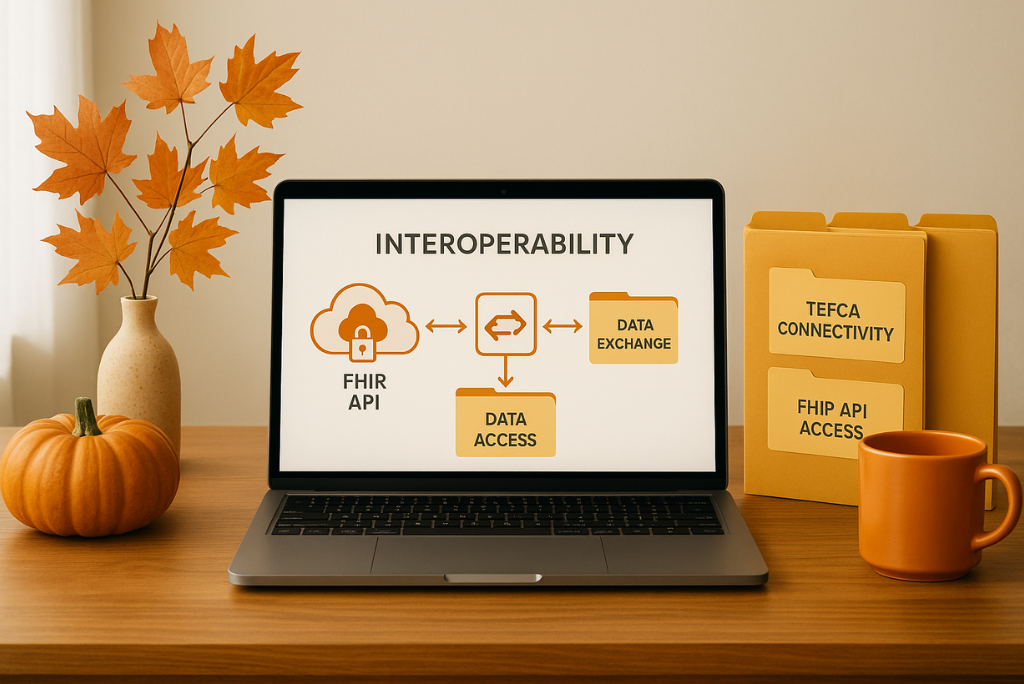The Data We’re Thankful For: Real Progress in Interoperability
For years, healthcare’s promise of interoperability felt just out of reach. Systems could not talk to each other, standards changed faster than adoption, and patients were often left waiting for their own data.
But in 2025, something changed.
This Thanksgiving, there is a reason to be thankful. Interoperability is no longer a distant goal. It is starting to deliver measurable results across the nation.
A Turning Point for Healthcare Connectivity
The last year brought real progress toward national interoperability. What was once a regulatory aspiration is now a functioning framework, thanks to three major developments.
1. TEFCA Networks are Live and Exchanging Data
The Trusted Exchange Framework and Common Agreement (TEFCA) is finally operational. The first Qualified Health Information Networks (QHINs) are live and exchanging clinical data securely across previously disconnected systems.
According to the Office of the National Coordinator for Health IT (ONC), QHINs such as CommonWell Health Alliance, Epic Nexus, eHealth Exchange, and Health Gorilla are now designated and actively connected.
Sources: https://sequoiaproject.org/tefca
2. FHIR APIs Have Become the Standard
Under the ONC HTI-1 Final Rule, all certified EHRs must support HL7 FHIR R4-based APIs for patient and population services by January 1, 2026. This requirement builds on the Cures Act Final Rule and establishes a consistent technical foundation for real-time data exchange across the healthcare ecosystem.
It means every certified health IT developer must support modern, standardized API connections that improve patient access and data sharing.
3. CMS Rules are Making Data Exchange Routine
The Centers for Medicare & Medicaid Services (CMS) has moved beyond encouragement to enforcement. New CMS rules require both payers and providers to use FHIR APIs for interoperability, prior authorization, and MIPS reporting.
The CMS Interoperability and Prior Authorization Final Rule (CMS-0057-F), finalized in January 2024, mandates payer-to-payer data exchange and improves transparency across care settings.
These changes are reshaping daily workflows, not just compliance checklists.
Why This Progress Matters
The benefits of interoperability are finally visible in practice:
Fewer data silos: QHINs allow patient records to move securely across networks and providers.
Smarter reporting: FHIR-based APIs improve accuracy for MIPS and other quality programs.
Better patient access: Patients can use third-party SMART on FHIR apps to view and share their data securely.
Less administrative burden: Automated data exchange eliminates manual chart pulls and redundant faxes.
Each of these improvements strengthens the quality, speed, and coordination of care.
Darena Health’s Role in This Progress
At Darena Health, we are proud to help drive real interoperability. Our FHIR-first platform and the Patient Connect solution align with the same national standards that define the new era of healthcare data exchange, including TEFCA, HL7 FHIR R4, and SMART on FHIR.
Patient Connect enables secure, consent-driven, patient-mediated data sharing between providers, EHRs, and digital health partners.
The ASTP/ONC Certified Modules ensure compliance with ONC’s HTI-1 and CMS interoperability rules while minimizing operational effort for healthcare organizations.
Darena Health helps providers and EHRs move beyond compliance to achieve seamless, sustainable interoperability that delivers value every day.
A Thanksgiving Reflection
It took time, collaboration, and persistence, but healthcare is finally seeing tangible progress in interoperability.
This Thanksgiving, we are thankful for the work that has made it possible - the developers, policymakers, and providers who believed in connected care and kept building toward it.
The future of interoperability is not just about compliance. It is about clarity, access, and trust.
At Darena Health, we are proud to power that progress with technology that connects data where it matters most- between people, systems, and care settings.






